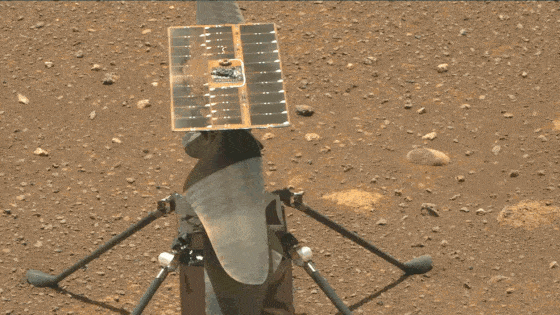
For SpaceUpClose.com & RocketSTEM
CAPE CANAVERAL, FL – NASA is targeting early Monday, April 19, for the history making first ever controlled test flight of the experimental Ingenuity Mars helicopter on the Red Planet after successfully updating the software to avoid glitches that postponed the inaugural test from last week and then completing a required high speed spin test of the rotorcrafts blades on Friday, April 16.
If the flight test campaign is successful it could eventually lead to more advanced NASA helicopter missions in the future acting as airborne scouts to pave a productive and safe path forward for future rovers on Mars and throughout the solar system.
The fully autonomous test flight had been planned for April 11 after successfully completing the initial slow speed spin test of the rotor blades.
However, a higher speed spin blade test on April 9, ended prematurely and the team had to look into the cause and analyzing why and therefore postponed the 1st flight test of the $85 million Ingenuity copter additional days.
The problem was determined to be a “watchdog timer issue” that occurred during a high-speed spin test of the rotors resulting in a command sequence controlling the test ending it early during the transition from “preflight” to “flight” mode.
NASA announced Friday, April 16, that the team was scheduling Monday April 19 as the target date for the history making maiden test flight of the first aircraft beyond Earth.
If all proceeds as planned, the 4-pound (1.8-kg) rotorcraft is expected to take off from Mars’ Jezero Crater Monday, April 19 at 3:30 a.m. EDT, 12:15 a.m. PDT, 0730 GMT hovering about 10 feet (3 meters) above the surface for up to 30 seconds to 40 seconds
And today, Sunday, April 19, NASA officially announced that the team is GO for Mondays first test flight of Ingenuity on Mars.
“#MarsHelicopter, you are cleared for takeoff. Flight commands are being sent. Watch live on Monday, April 19 at 3:15am PT (6:15am ET/1015 GMT) as the team finds out if they’ve made history by achieving the first powered flight on another planet,” the NASA JPL team confirmed today.
“The #MarsHelicopter is officially “go” for flight! Can’t wait to watch tomorrow’s historic test. Cameras ready,” NASA’s Perseverance rover tweeted in response to the official GO from NASA JPL!!
Perseverance will have multiple cameras trained on Ingenuity at the appointed flight time, including both wide angle and zoom video imagery from the zoomable, mast mounted Mastcam-Z camera.
Ingenuity also has two cameras mounted looking down and across to Jezero crater to record the historic events.
The #MarsHelicopter is officially “go” for flight! Can’t wait to watch tomorrow’s historic test. Cameras ready. https://t.co/KoTdO0iSoQ
— NASA's Perseverance Mars Rover (@NASAPersevere) April 18, 2021
You can ‘Watch Online’ as the data streams back live on a NASA webcast early Monday morning as the helicopter team at JPL mission control receives the data from Mars and finds out if they were successful:
Tune in on Monday, April 19 at 6:15 a.m. EDT, 3:15 a.m. PDT, 1015 a.m. GMT;
Video Caption: First Flight of the Ingenuity Mars Helicopter: Live from Mission Control. Up, up, and away! The Ingenuity #MarsHelicopter is set to make history. It will make the first attempt at powered flight on another planet on Monday, April 19. Don’t miss your chance to watch live with helicopter team in mission control beginning at 6:15 a.m. EDT (10:15 a.m. GMT) as they receive the data and find out if they were successful.
Ingenuity’s two counterrotating rotorblades are made of a lightweight carbon fiber foam core to provide lift in the thin Mars atmosphere.
The Perseverance mothership rover “will provide support during flight operations, taking images, collecting environmental data, and hosting the base station that enables the helicopter to communicate with mission controllers on Earth.”
“At 12:31 a.m. PDT [3:31 a.m. EDT] on Monday, April 19, 2021, the Ingenuity helicopter team is going to attempt the first ever powered, controlled flight on another planet. We are optimistic that the helicopter will be able to take off from the Martian surface at this time; however, this is a test and we are prepared that it may not occur,” wrote MiMi Aung, Ingenuity project manager at JPL, in a blog post April 17.
In the event of a scrub the team can try another day.
JPL built and manages the Ingenuity and Perseverance missions for NASA.
If the flight takes place April 19, a postflight briefing will be held at 2 p.m. EDT.
The goal is to conduct a history making ‘Wright Brothers’ first flight moment with the agencies experimental craft on Mars on April 19 if all goes well – aiming to make the first attempt at powered, controlled flight of an aircraft on another planet.
Data and imagery will be received back on Earth transmitted via NASA’s MRO orbiter several hours later per the live stream update link above.
And Ginny has to do all that in the ultra-thin Martian atmosphere less than 1% as dense as Earth’s.
Furthermore to continue operating the copter must now survive utterly harsh and frigid Martian nights where overnight temperatures at Jezero Crater plunge down to Antarctica-like temperatures of -130ºF (-90ºC).
Moreover the solar powered chopper is totally reliant for its survival on gathering sufficient power from its life giving solar arrays to keep it alive and healthy and functionally operating.
Now that its deployed, Ingenuity will have 30 Martian days, or sols, (31 Earth days) to conduct its test flight campaign of up to five test flights.
#MarsHelicopter 1st flight attempt delayed to no earlier than April 14
During the high-speed spin test, the sequence ended early during the transition from "preflight" to "flight" mode. The helicopter is safe & healthy. The team is diagnosing the issue. https://t.co/ysnZzKR7qM pic.twitter.com/lP3NrIvGBs
— NASA JPL (@NASAJPL) April 10, 2021
Perseverance has moved a safe distance away and will observe the test flight from about 60 meters (200 feet) at an overlook site – see map below.
I’ve taken several turns and made about 0.17 miles (270 meters) of wheel tracks from where I started to my current spot overlooking the #MarsHelicopter.
Check in on my location any time with this interactive map: https://t.co/uPsKFhW17J pic.twitter.com/AO5LJu41f0
— NASA's Perseverance Mars Rover (@NASAPersevere) April 15, 2021
Here are further details from NASA:
“Once the team is ready to attempt the first flight, Perseverance will receive and relay to Ingenuity the final flight instructions from JPL mission controllers. Several factors will determine the precise time for the flight, including modeling of local wind patterns informed by measurements taken by the MEDA (Mars Environmental Dynamics Analyzer) instrument aboard Perseverance. Ingenuity will run its rotors to 2,537 rpm and, if all final self-checks look good, lift off. After climbing at a rate of about 3 feet per second (1 meter per second), the helicopter will hover at 10 feet (3 meters) above the surface for up to 30 seconds. Then, Ingenuity will descend and touch back down on the Martian surface.
Several hours after the first flight has occurred, Perseverance will downlink Ingenuity’s first set of engineering data and, possibly, images and video from the rover’s Navigation Cameras and Mastcam-Z, a pair of zoomable cameras. From the data downlinked that first evening after the flight, the Ingenuity team expects to be able to determine if its first attempt to fly at Mars was a success. Flight test results will be discussed by the Ingenuity team in a media conference that same day.”
To get to this point of preparing for flight NASA’s experimental solar powered Ingenuity Mars Helicopter has safely survived its first several frigid Martian nights standing alone and all on its own power overnight on Monday, April 5, Sol 44, after being safely deployed to the ‘Martian Flight Field’ on Sunday, April 4, and carefully dropped from the attach point on the belly of the Perseverance rover where its been hanging this past week after completing the methodical step by step unfolding, swing down and deployment of all four graphite composite landing legs.
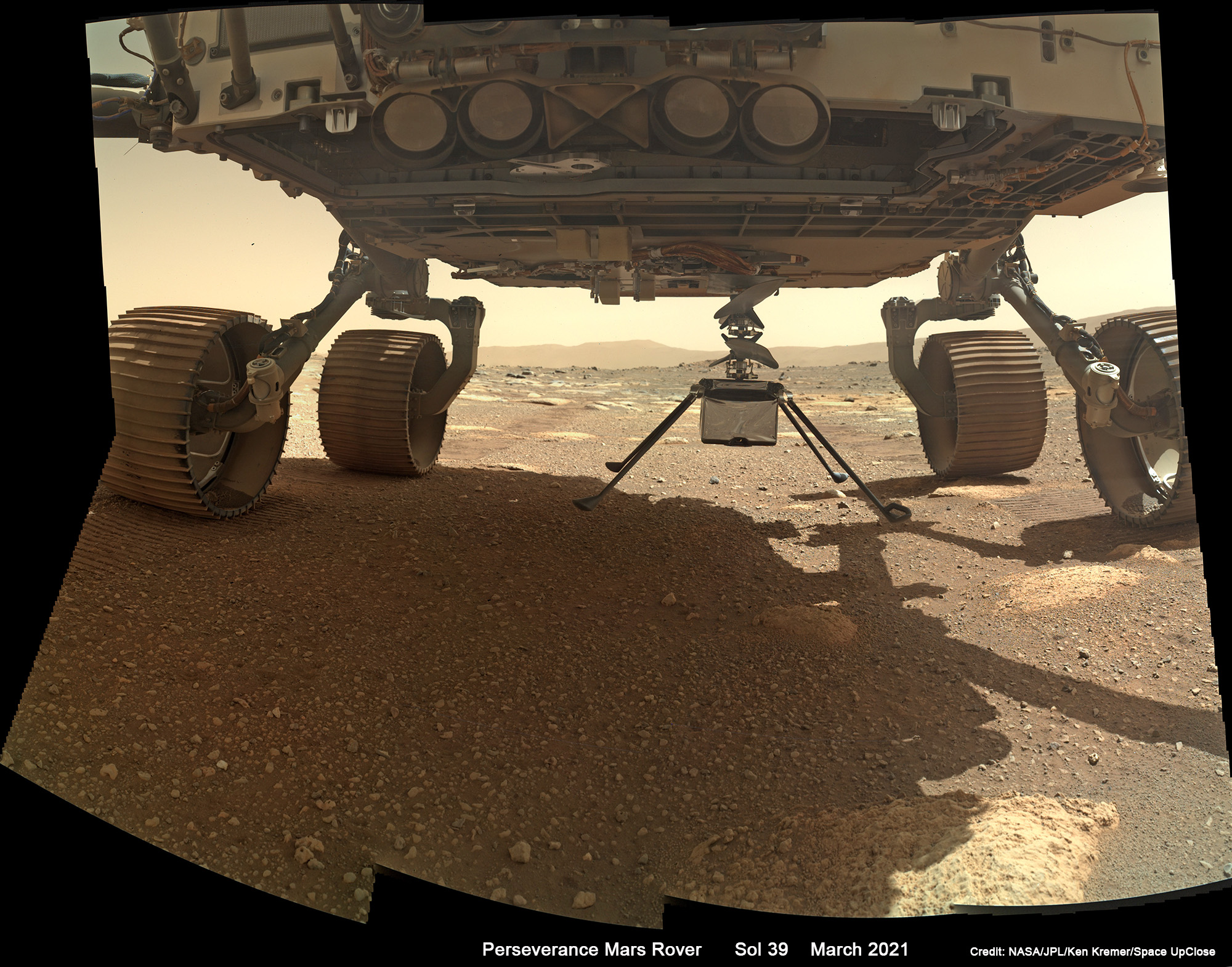
After the surface drop deployment NASA’s Perseverance rover then snapped her first ever selfie on Mars last week on April 6, or Sol 46 – as well as its also being the first joint selfie with the experimental Ingenuity Mars helicopter on the Red Planet – – and its truly spectacular !!
Ginny and Percy (nicknames for Ingenuity and Perseverance) are seen together in my new mosaics here about 13 feet (4 meters) apart in imagery taken on April 6, 2021, the 46th Martian day, or sol, of the mission – ahead of humanity’s history making first controlled test flight by an aircraft beyond Earth now just days away and targeted for April 19.
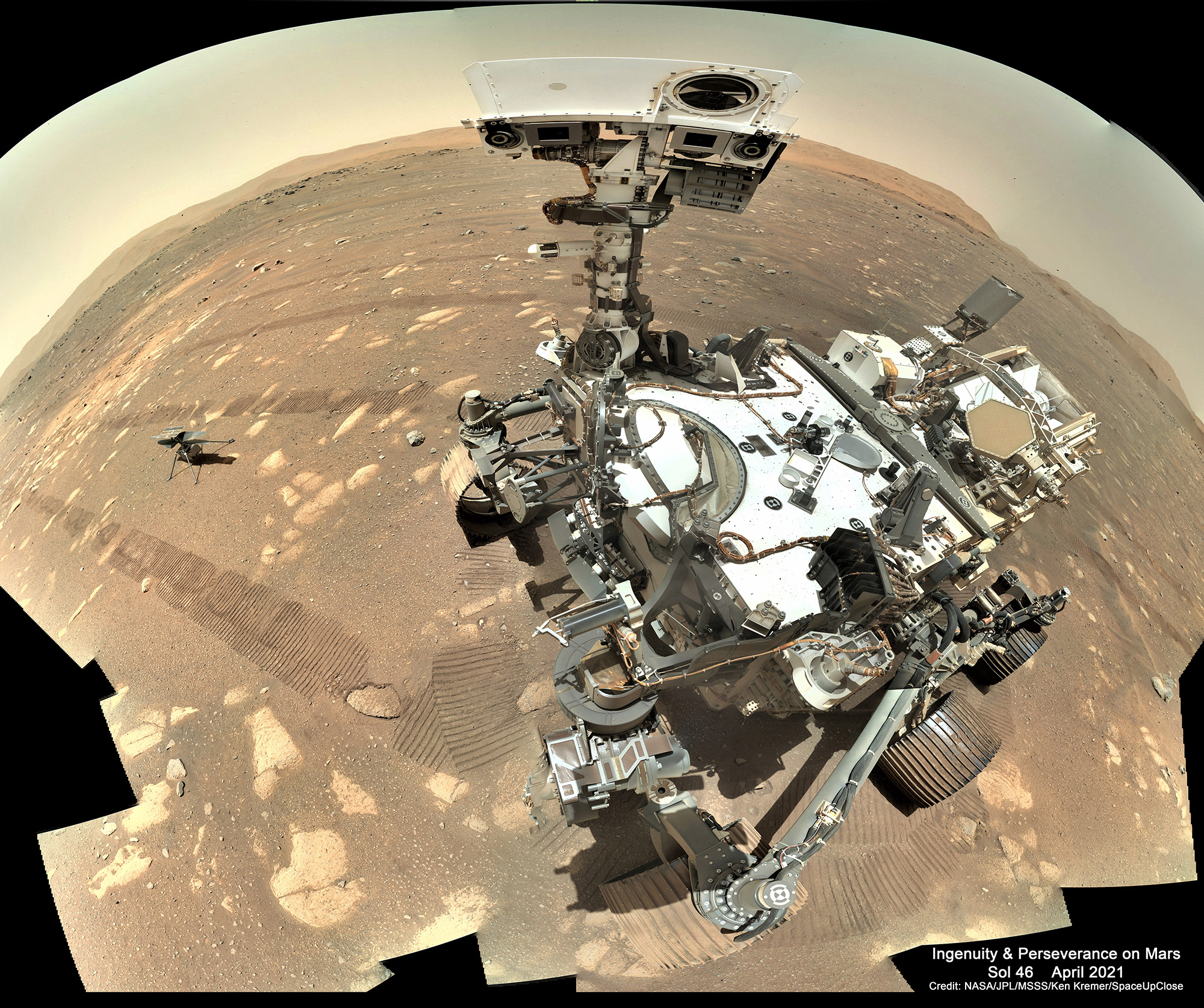
Enjoy my two versions herein of the Sol 46 double selfie view from my stitches of several dozen raw images taken by the high resolution WATSON camera located at the end of the rover’s robotic arm, showing wide angle rounded fisheye and flat scenes of NASA’s $80 million rotorcraft and the $2.7 Billion SUV sized rover.
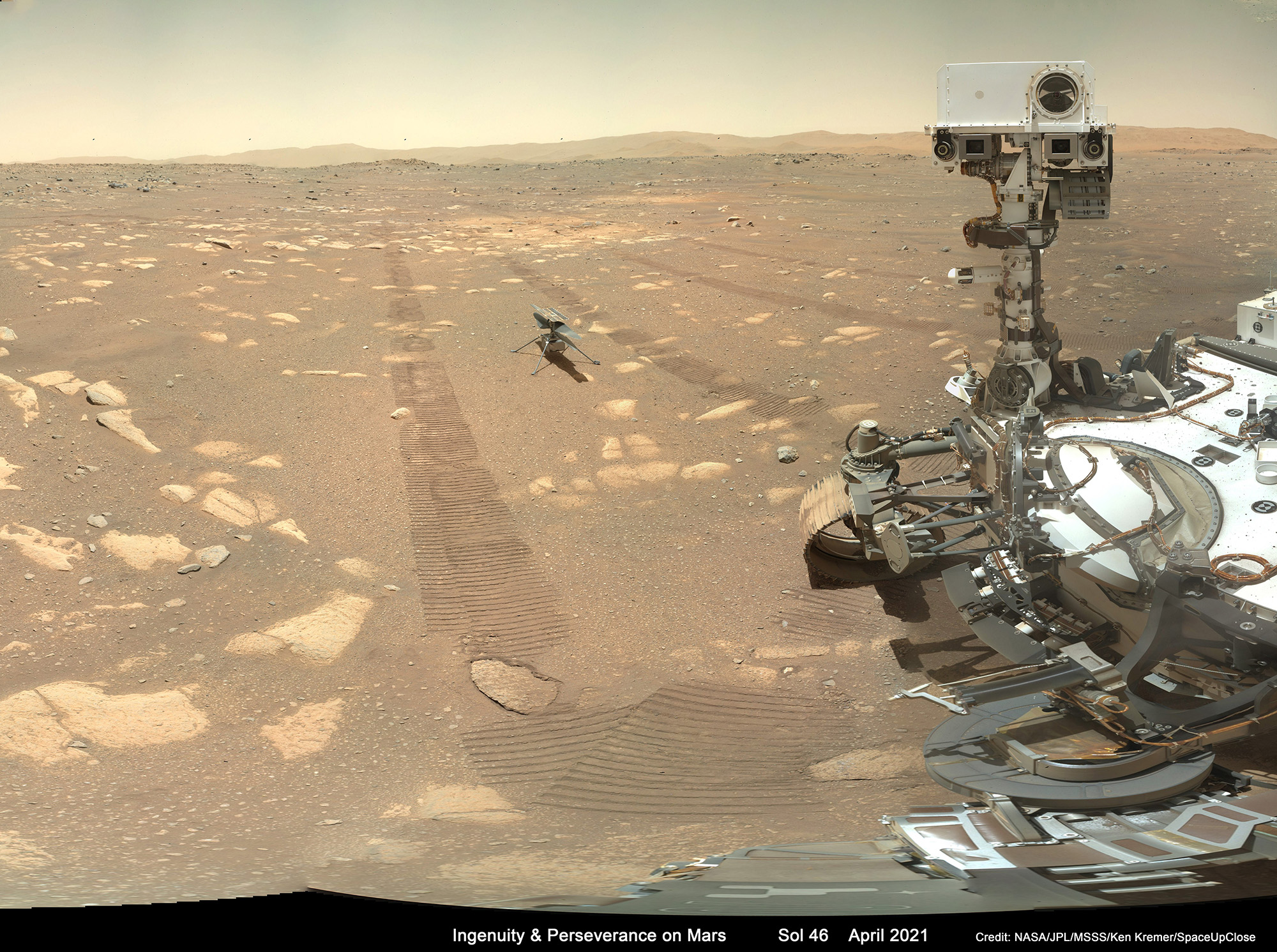
With Ingenuity now deployed on Mars’ surface its six lithium ion batteries will be charged solely by the helicopter’s own solar panel.
If Ingenuity were to encounter difficulties during its 30-sol (Martian day) mission, it would not impact the science gathering of NASA’s Perseverance Mars rover mission.
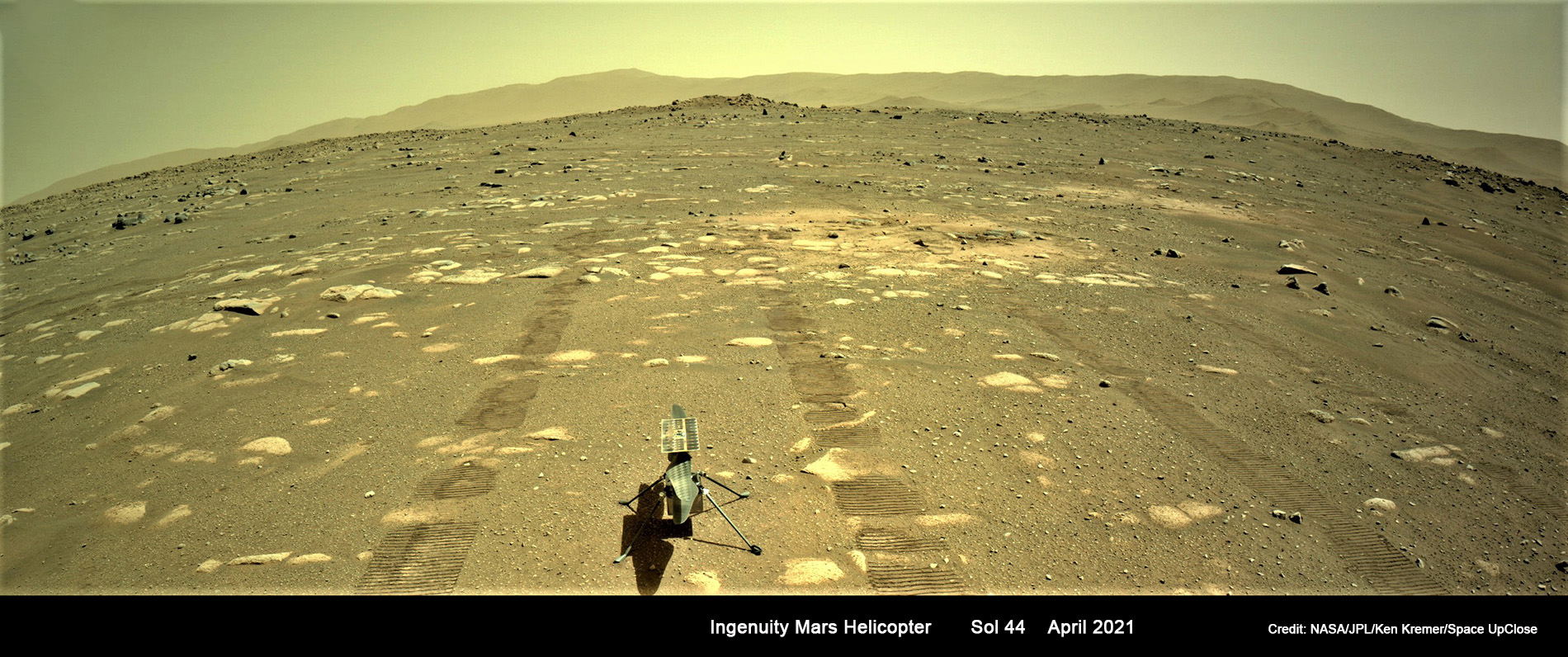
It is equipped with two counter rotating blades for lift spinning at about 2,400 rpm and two cameras.
Another challenge arising from the extremely thin Martian artmosphere is because Mars still has significant gravity about 1/3 of Earth with little atmospheric density for lifting.
The Martian ‘airfield’ chosen for the test flights measures about 10 meters x 10 meters (33 feet x 33-feet) in size and chosen as prime real estate for the test flight because it is smooth, flat and relatively free of obstructions like rocks, large boulders and slopes which could interfere with a safe landing on the four legs.
This milestone also initiates the 30-sol clock during which time all preflight checks and flight tests must take place, declared the team.
The first flight now targeted for April 19 will be the most important since it will be the first demonstration of powered flight on another world – if all goes well.
“The first flight is special. It’s by far the most important flight that we plan to do,” said Håvard Grip, Ingenuity chief pilot at the media briefing. “It will be the first powered flight by an aircraft on another planet.”
During the first test flight Ingenuity will rev up its rotors to 2,537 rpm. If all checks out well it will climb at a rate of about 3 feet per second (1 meter per second) to about 3 meters (10 feet) above the surface and hover in place for about 30 seconds while turning
Then Ingenuity will descend and touch back down on the Martian surface on its four landing legs.
Four more tests of increasing complexity will follow depending on the results and analysis by the team
NASA and the JPL team running the mission are limiting Ingenuity to only a 30 sol mission because the rover needs to move on from this technology demonstration experiment to its primary science task of astrobiology aimed at searching for signs of ancient alien microbial life and gathering soil and rock samples at Jezero crater for eventual return to Earth in a decade or so.
Watch this NASA JPL trailer illustrating the Ingenuity mission:
My commentary about the search for life on Mars and the deployment of the Ingenuity Helicopter was featured in a live interviews on April 9 and March 30 on News Nation Cable TV News Network on ‘The Donlon Report’ illustrated with my Mars mosaics
https://twitter.com/TheDonlonReport/status/1380936805470642178
https://twitter.com/TheDonlonReport/status/1377282034775769092
The solar powered Ingenuity helicopter is a technology demonstration experiment aimed at attempting the first flight on Mars.
The four legged Ingenuity has a mass of about 4.0 pounds (1.8 kilograms) and stands 1.6 feet or 19 inches (0.49 meters) high.
Watch Ken’s continuing reports about Mars 2020 Perseverance and Curiosity rovers, Artemis and NASA missions, SpaceX, Starlink, Commercial Crew and Starliner and Crew Dragon and onsite for live reporting of upcoming and recent SpaceX and ULA launches including Crew 1 & 2, Demo-2, ISS, X-37B, Solar Orbiter, NRO spysats and national security missions and more at the Kennedy Space Center and Cape Canaveral Space Force Station.
Stay tuned here for Ken’s continuing Earth and Planetary science and human spaceflight news: www.kenkremer.com –www.spaceupclose.com – twitter @ken_kremer – email: ken at kenkremer.com
Dr. Kremer is a research scientist and journalist based in the KSC area, active in outreach and interviewed regularly on TV and radio about space topics.
………….
Ken’s photos are for sale and he is available for lectures and outreach events
Ken has created hundreds of widely published Mars rover mosaics and lectures also about NASA’s Mars rovers
Please consider supporting Ken’s work by donating at Patreon:
https://www.patreon.com/kenkremer
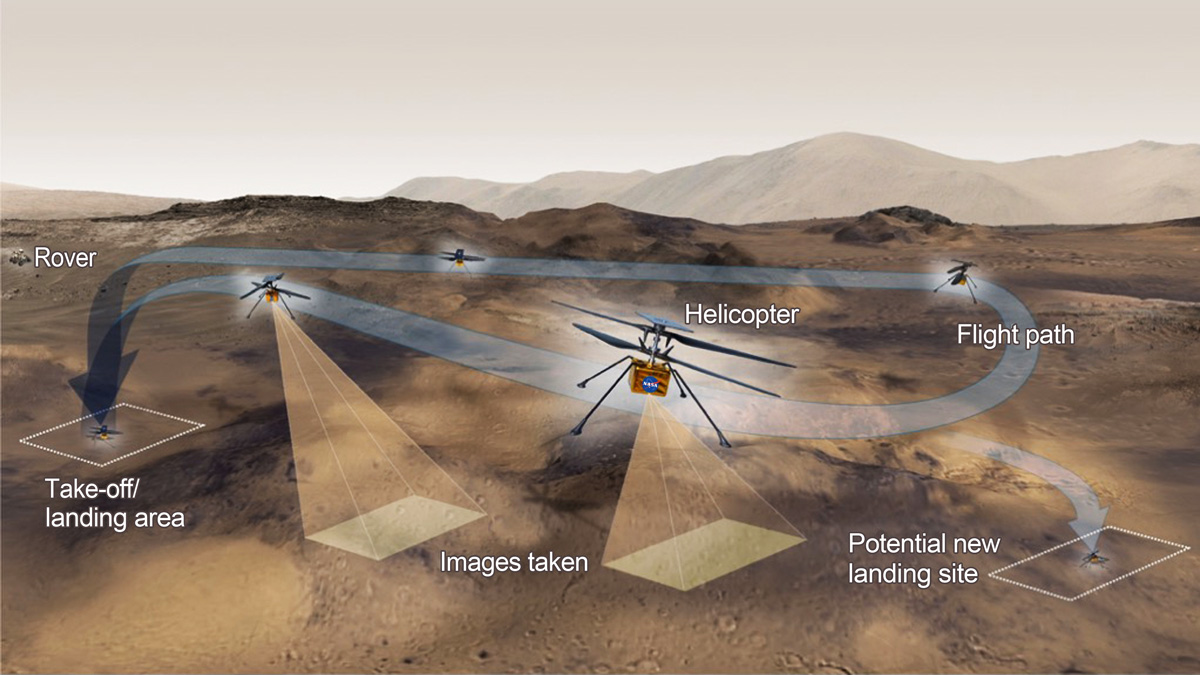
x



